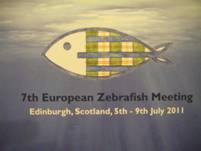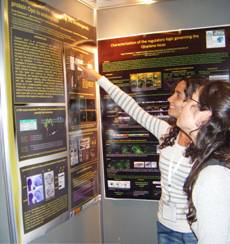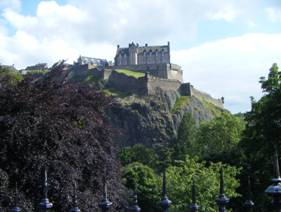7th European Zebrafish Meeting
Posted by Maria Nicolas Perez, on 29 August 2011
During the European summer Edinburgh, the Scottish capital, is famously the place to be at while it hosts its world-renowned Festival. But this year it is also the place where the European Zebrafish Meeting was celebrated. The efforts of the Local and International Organizing Committees of the 7th European Zebrafish Meeting made this possible.
As a 2nd year PhD student, I was very keen to visit this exciting city and to take part in my first international meeting. The opening reception consisted of a cocktail in the Edinburgh International Conference Centre, which gave visiting researchers the chance to meet fellow scientists from other countries but also to have a look at the sponsors’ stands. It was a promising start that was then followed by four days of amazing talks and poster sessions.
The attendees had the opportunity to choose from a wide variety of sessions on subjects such as behavior, sensory systems, regeneration and stem cells, infection and immunity, organogenesis, muscle, skin and connective tissue, cancer and, of course, development. All of those I managed to attend had excellent speakers. In particular, I enjoyed Robert Reinhardt’s (Wittbrodt Lab) talk about vertebrate synexpression genes, where he showed that synexpression groups (composed of spatio-temporally co-expressed genes which act in the same biological process) share common cis-regulatory motifs. As my own project is on eye development I was also partial to the talk by Fabienne Poulain (University of Utah) who proposed a model to explain the trajectory of retinal axons in the optic tract. She explained how dorsal axons in the retina arrive to the lateral part of the tectum and how the others degenerate. This sorting is a heparan sulfate-dependent mechanism.
Florence Marlow´s talk (Solnika-Krezel lab) about the new cell polarity pathway component Gpr125 was also very interesting. This gene is involved in the stabilization of polarity within the plane of an epithelium. Finally, it’s certainly worth mentioning Florencia Cavodeassi´s talk (Stephen Wilson lab) about morphogenesis of the forebrain. She explained the important role that boundaries of Ephrin activity in the anterior neural plate have in the specification of the eye field and the subsequent morphogenesis of the forebrain.
During the poster sessions, students like myself shared our research and got helpful feedback from doubts with the wide variety of experts available, who were happy to discuss our queries.
At this meeting, PhD students like me had a great opportunity to expand our scientific knowledge. It doesn´t matter what you are working on, at the EZM you can learn a lot about what people are doing all over the world and about the latest techniques available. Hopefully, you can also discover new tools that might be useful for your own project and which you had not considered.
Once the talks had finished, the hosting committee organized a concert in St. Mary’s Cathedral, where we enjoyed listening to one of the most famous choirs in the world.
However, this was not the end of our cultural experience. We were yet to see the most emblematic place in Edinburgh. The visit to Edinburgh Castle during the last night of the Meeting was amazing. The environment transported us back to the Middle Ages. We could breathe the power of many Scottish kings. We were treated to a cocktail in the courtyard, where we enjoyed a performance by a group of bagpipers: you have not experienced Scotland if you’ve not heard bagpipes. It was all very exciting indeed.
Finally, Berta Alsina and the Spanish committee presented a brief overview of Barcelona (Spain) where the next European Zebrafish Meeting will take place in 2013.
If, like myself, you have fish as your experimental model, I encourage you to attend a zebrafish meeting at some point during your PhD because it opens up the possibilities of what your model can do for you, and you get to meet many people from the community. The Edinburgh Meeting was a great occasion to learn about cutting edge science and I am very glad I was part of it.
Enjoy the photos and feel free to share your comments.





 (4 votes)
(4 votes)